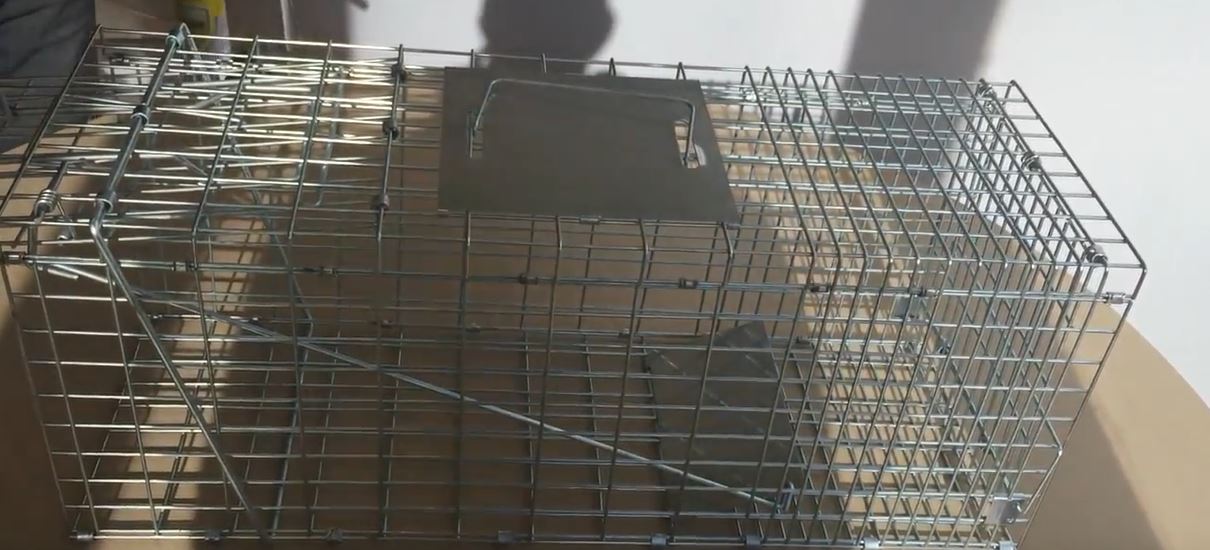Opossum Trapping: How To Trap An Opossum

When an opossum is somewhere on your property, you can be in for a significant amount of damage and mess. These animals will go through garbage in search of food and even destroy items that get in the way of their search for shelter or a meal. A great way to prevent damage is to trap the opossum and relocate him, but this will only be an option if doing so is legal in the area you live. You should always check your local laws and regulations before trapping an opossum as sometimes this can be illegal and in other cases, the process of relocating or releasing it may be. Once you have confirmed that you can do so, here are the basic steps to trapping an opossum.
The Best Method
Preventing a possum from ever entering your property will technically be the best method of protecting your home and land. If this doesn't work and you end up with an opossum on your land or in a building, then many experts agree that trapping the animal will be your next best choice to make sure that it is truly gone from your property and will not return. An expert will have the right traps and experience to perform this task for you. Whether or not you hire an expert, always be careful around the opossums, even when they are in the cage. They are likely to bite or scratch so you will need to wear thick gloves and avoid contact when handling the caged animal.
Types Of Traps
There are two general options for opossum traps, live traps and kill traps. Kill traps will attempt to kill the opossum in the process of catching it and they are very rarely used as they are dangerous if used incorrectly and can injure other animals or small children.
Instead, you should opt for one of the several types of live traps, such as cage traps. These are the most commonly used variety and you can find them in use throughout urban areas. Before you begin using the trap, it is wise to leave it outside for several days so the animals can get used to it. An alternative live trap is a leg-hold trap which will connect to the animal's leg so it cannot go farther away.
Ideal Bait Options
The great thing about opossums is that they will eat nearly anything, making it incredibly easy to find something to use as bait. The only issue to consider is that opossums will also be attracted to food throughout your property, so you want to make sure the item you place in the trap stands out. This means selecting a food that is unique or has a particularly powerful aroma. Consider items such as fish, apples, aniseed oil on some bread, or canned pet food.
You will also want to place the bait in the trap correctly. It should be far enough back that the opossum needs to enter the trap completely to reach it and engage the trigger in the process. If you are using a trap with one door, put it right past the trigger plate by the closed end. If you have a trap with two doors, you want to put it in the middle of the trap. Remember that for the best results, you should take an additional small amount of bait and sprinkle it in a trail leading to the trap.
Placing The Trap
Although it is possible to catch the opossum no matter where you place the trap, you can get the best results by putting it in the right spot. This should be either within the animal's den or close to it; if you don't know where the opossum sleeps, then consider putting it anywhere you have regularly seen the animal. If you cannot place the trap within or next to the den for some reason, then put it a few feet away from the entrance, always on a level surface. Remember to check the trap regularly so the opossum isn't exposed to harsh sunlight or other extreme weather.
Where To Release The Opossum
To minimize the risk of the opossum returning to your property, you will want to relocate it to an area that is at least 5 miles away from your land. To give it the best possible chance of survival, select an area with ready access to food and water as well as shelter, such as that provided by trees.
Timing The Trapping
When you have decided to trap an opossum that is on your property, you need to pay close attention to the time of the year. This is important because if it is the spring or summer, there may be babies present which would make it more difficult. When the babies are still young, they will most likely be on the mother's back or in her pouch. If, however, they are a bit older, you will need to set a large trap for the mother and multiple smaller ones for the babies, making an expert's help almost always necessary.
Read the How to get rid of opossums page for helpful information and to learn more about Opossum Trapping: How To Trap An Opossum

